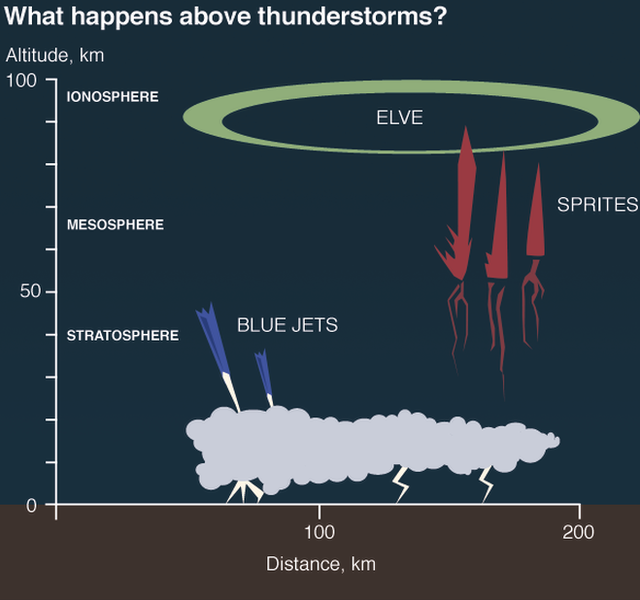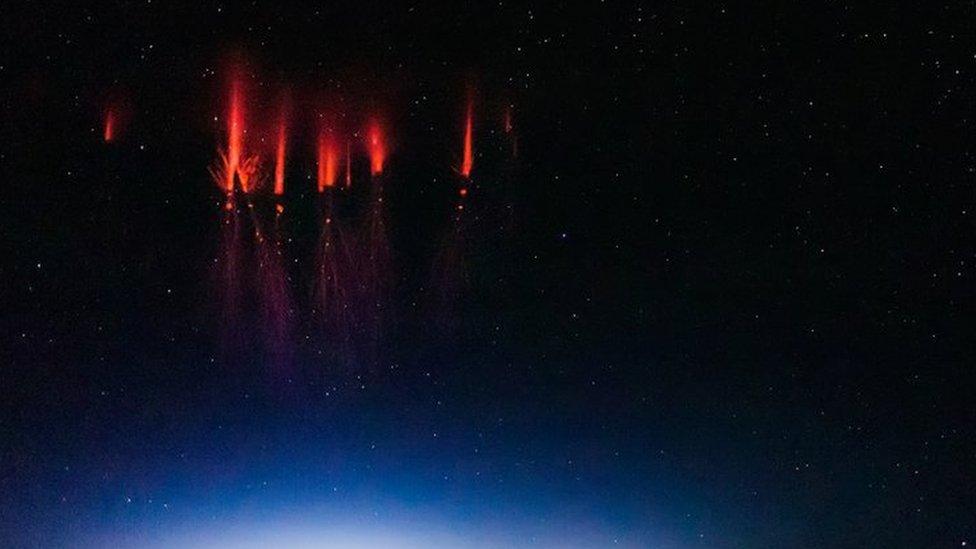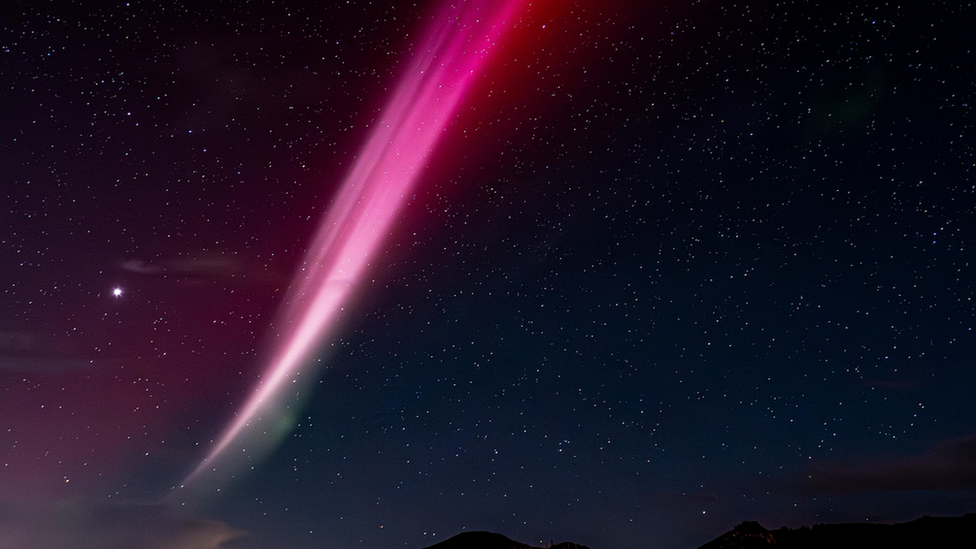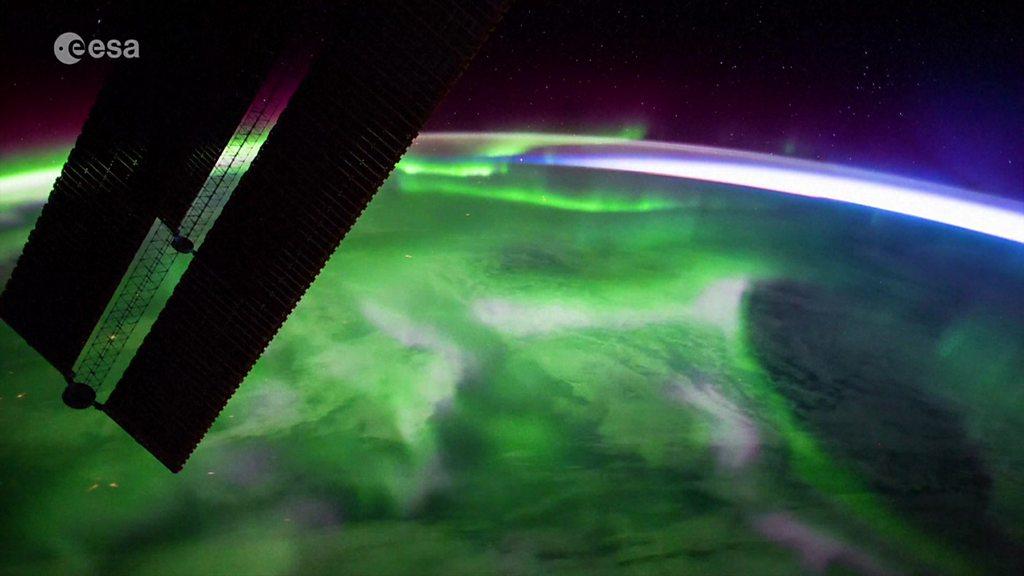Nasa: Blue jet space lightning spotted by scientists from the ISS
- Published
- comments
Nasa footage shows lightning seen from ISS
Now when you think of lightning you think of bright flashes cutting down through storm clouds just ahead of a huge crash of thunder.
But did you know that's just one type of lightning - and in some cases, that lightning can go upwards into space?!
What we can see from the surface of our planet is only the beginning, the most powerful activity occurs high above the surface, in Earth's upper atmosphere.
There are some pretty weird goings on up there and a Nasa mission that aims to learn more about them has reported that blue jets - bolts of lightning that shoots upwards from thunderstorm clouds - have been spotted from the International Space Station (ISS).
The phenomenon was spotted by the European Atmosphere-Space Interactions Monitor (ASIM) near the island of Naru in the Pacific Ocean.
Animation by Mount Visual shows blue jet space lightning blasts
In an article published in the science journal Nature, astronomers describe seeing five intense blue flashes, each lasting about 10 milliseconds.
The fifth flash sent out a pulsating blue jet, a form of lightning that can reach as far as 50km into the stratosphere and lasts less than a second.
What are blue jets, elves and sprites?

The electrifying effects of storms can be seen from the International Space Station really clearly.
Yet when lightning strikes downward, something very different is happening above the cloud tops.
Blue jets are a burst of electrical lightning which travel upwards from the clouds into the Earth's atmosphere.
And it's not the only phenomenon that experts are looking out for, known as Transient Luminous Events (TLEs), these unusual features were first spotted by accident in 1989.
Four of the blue flashes were accompanied by blasts of ultraviolet lights, which look like rapidly expanding rings.
They are known as Emissions of Light and Very Low Frequency Perturbations due to Electromagnetic Pulse Sources or, brilliantly... elves!

A blue jet and and an elve
The discovery came as a shock to scientists at the time, according to Dr Torsten Neubert, ASIM's lead scientist.
"That really surprised all of us. How come this exists and we didn't know it? Airline pilots must have known about it" said Dr Neubert.
For the better part of a century before TLEs were caught on camera, people who spotted them had been reporting "rocket lightning" or "upward lightning".

Sprites occur above the cloud tops - making them easier to photograph if you're quick enough!
Now in need of names, the phenomena were christened sprites and elves because of their fleeting, mysterious nature.
But these features extend tens of kilometres into the atmosphere.
What is ASIM?
The European Atmosphere-Space Interactions Monitor, or ASIM, is an instrument also known as the "space storm hunter."
Orbiting at an altitude of just over 400km, the ISS provides the perfect view of Earth's weather systems and ASIM is an observation facility on the outside of the space station used to study severe thunderstorms and their role in Earth's atmosphere and climate. ASIM has been on the ISS since 2018.
Scientists say its studies could help reveal how lighting starts and how it could even influence the greenhouse gasses in the Earth's atmosphere.

Sprites occur well above the cloud tops
Of the blue jet reports, Astrid Orr, ESA's physical sciences coordinator for human and robotic spaceflight, said: "This paper is an impressive highlight of the many new phenomena ASIM is observing above thunderstorms and shows that we still have so much to discover and learn about our universe.
"Congratulations to all the scientists and university teams that made this happen as well as the engineers that built the observatory and the support teams on ground operating ASIM - a true international collaboration that has led to amazing discoveries."
- Published14 April 2019
- Published6 November 2023

- Published26 September 2017

